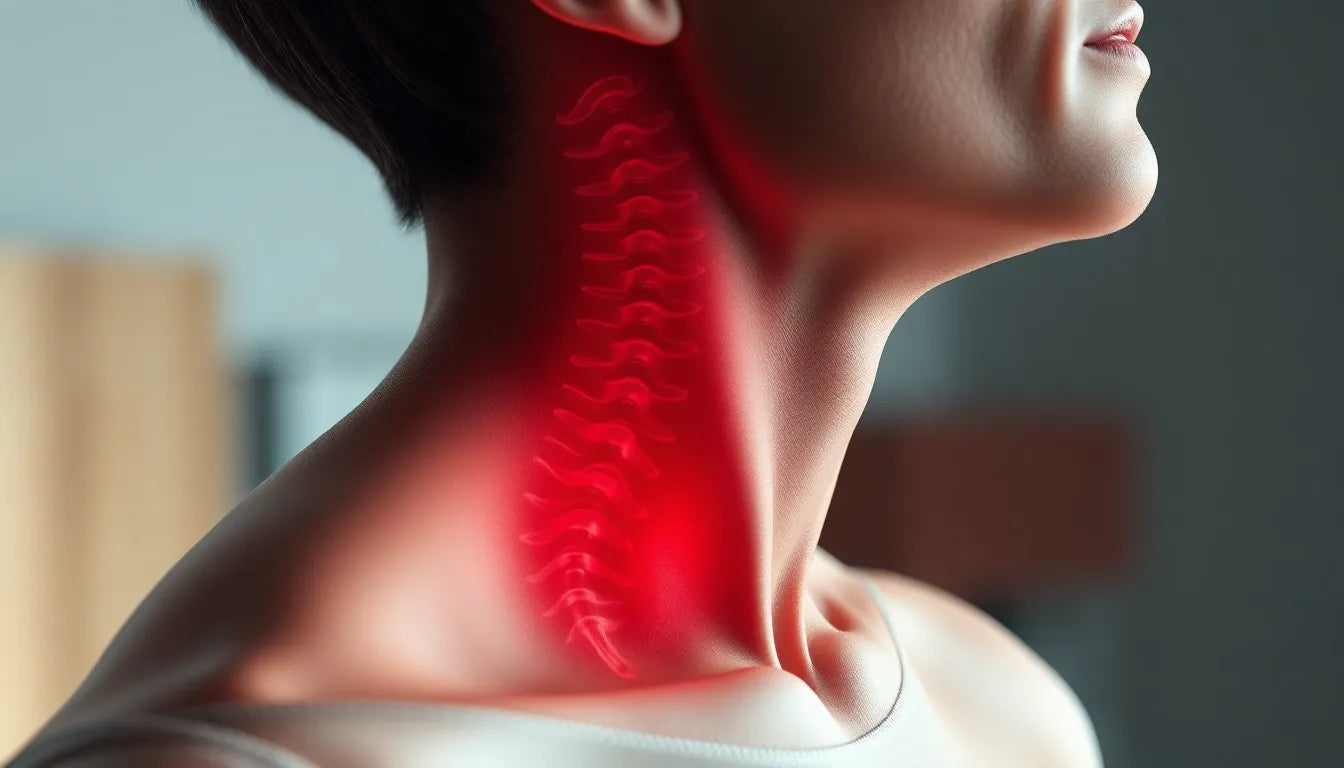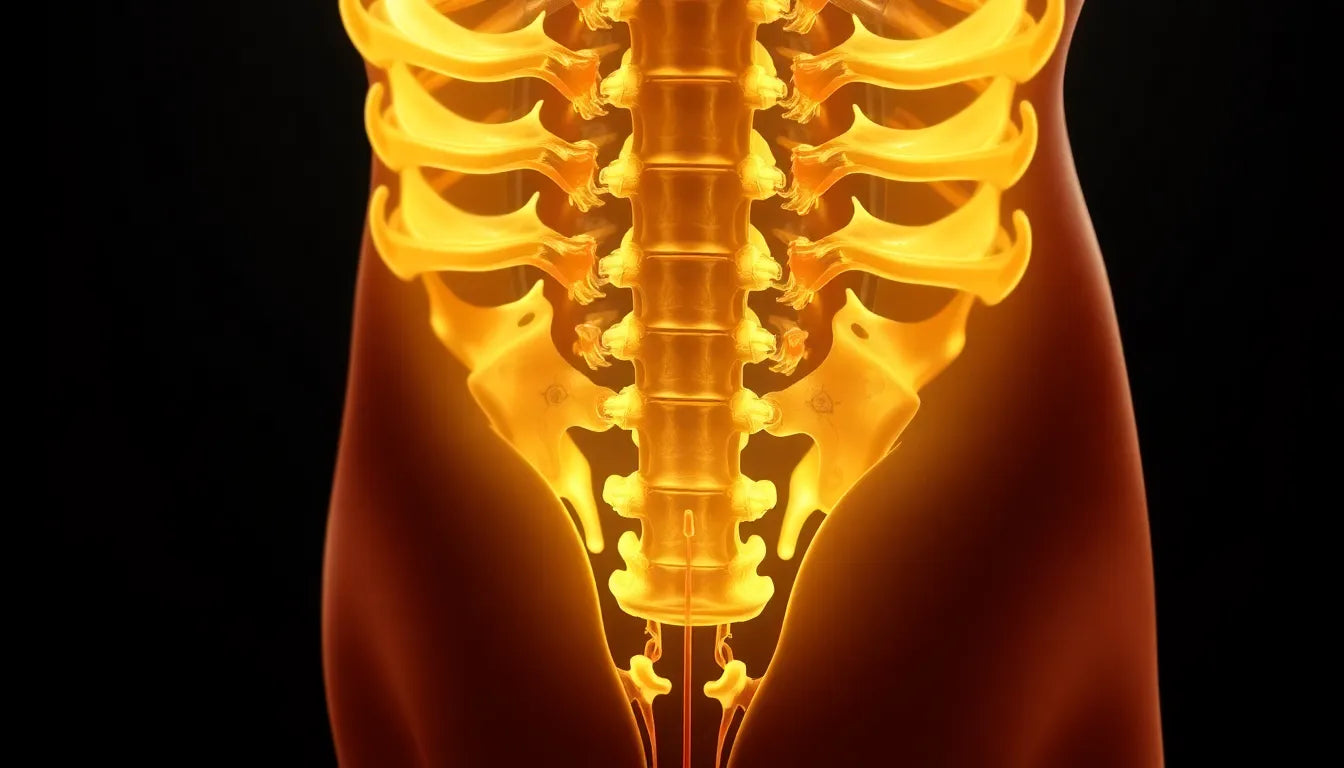Imagine waking up one morning, ready to tackle the day, only to be halted by a sharp, unrelenting pain in your lower back. Everyday activities like bending to tie your shoes or sitting at your desk suddenly become daunting tasks. This scenario is all too familiar for those suffering from a herniated disc, a condition that can significantly impact daily life.
Understanding herniated discs and their prevalence
A herniated disc occurs when the soft, gel-like center of a spinal disc pushes through a crack in its tougher exterior. This can irritate nearby nerves and lead to pain, numbness, or weakness in an arm or leg. It's a common condition, particularly among adults aged 30 to 50, and can be caused by various factors, including age-related wear and tear, improper lifting, or even sudden trauma.
The symptoms of a herniated disc can vary widely. Some individuals experience severe pain, while others might only feel a slight discomfort. Common signs include sharp pain radiating down the leg or arm, tingling sensations, and reduced mobility, which can make even the simplest tasks difficult.
The importance of understanding recovery time
Knowing how long it takes for a herniated disc to heal is crucial for anyone dealing with this condition. Understanding the recovery timeline helps in setting realistic expectations and planning daily activities accordingly. It also aids in managing the emotional and physical stress that often accompanies prolonged pain.
So, how long does it take for a herniated disc to heal? This is a question many patients and healthcare providers grapple with. Recovery time can vary significantly depending on several factors, including the severity of the herniation, the individual's overall health, and adherence to treatment plans. In the following sections, we'll delve deeper into the typical healing timeline and the stages of recovery, providing you with the insights needed to navigate your journey to wellness.
Typical healing timeline for a herniated disc
Understanding the typical healing timeline for a herniated disc can provide much-needed clarity and reassurance during the recovery process. Generally, most cases of herniated discs begin to show significant improvement within 2 to 8 weeks. During this period, individuals often experience a noticeable reduction in pain and an increase in mobility, allowing them to gradually resume daily activities.
For a full recovery, however, the timeline can extend from 6 weeks to 3 months, depending on various factors such as the severity of the herniation and the individual's overall health. In some instances, the recovery process may take up to a year or more, particularly if the herniation is severe or if there are complications involving nerve involvement.
It's important to differentiate between pain relief and structural healing. While many people experience pain relief relatively early in the recovery process, complete structural healing of the disc can take significantly longer. This distinction is crucial for setting realistic expectations and maintaining a positive outlook throughout the journey to recovery.
Stages of herniated disc healing
The healing process for a herniated disc can be divided into distinct stages, each characterized by specific symptoms and improvements:
Acute inflammation (1-2 days to 2 weeks)
The initial stage of healing is marked by acute inflammation, during which individuals often experience severe pain, inflammation, and reduced mobility. This phase is crucial for the body's natural healing mechanisms to kick in, as inflammation helps to protect the area and initiate the repair process.
Subacute/plateau (2-6 weeks)
During the subacute or plateau phase, symptoms typically begin to improve, with pain decreasing and mobility increasing. This stage is often a turning point for many individuals, as they start to regain some degree of normalcy in their daily lives. Adhering to a prescribed treatment and rehabilitation plan during this phase is essential for continued progress.
Stabilization and remodeling (6-12 weeks+)
As recovery progresses into the stabilization and remodeling phase, individuals often experience further pain reduction and are able to return to regular activities. Ongoing tissue repair occurs during this period, contributing to the gradual healing of the herniated disc. It's crucial to continue following medical advice and engage in appropriate exercises to support the healing process.
Long-term healing (beyond 12 weeks)
For some, the long-term healing phase extends beyond 12 weeks, focusing on prevention and lifestyle adjustments to maintain spinal health. While complete tissue healing may continue for several months, this stage emphasizes the importance of adopting healthy habits to prevent future issues and ensure lasting recovery.
Factors influencing herniated disc recovery time
The recovery time for a herniated disc can vary significantly based on several factors. The severity of the herniation plays a crucial role, with mild cases typically healing faster than severe ones. Additionally, individual health factors such as age, overall health, and activity level can impact the healing process. Younger individuals and those in good health often experience quicker recovery times.
Adherence to treatment and rehabilitation plans is another critical factor influencing recovery. Following medical advice and engaging in prescribed exercises can significantly enhance the healing process and prevent complications. Furthermore, the presence and extent of nerve involvement can affect the timeline, as cases with significant nerve compression may require more time to heal fully.
Understanding these factors and tailoring the recovery approach accordingly can help individuals manage their expectations and actively participate in their healing journey.
Self-healing and when to seek medical intervention
Many individuals with herniated discs find that their condition improves naturally over time. The body can reabsorb the displaced disc material, leading to a reduction in symptoms even if an MRI still shows abnormalities. This self-healing process is encouraging, as it means that surgery is often unnecessary. However, it's important to recognize that some cases can become chronic, with persistent symptoms that may require medical intervention.
If you experience significant pain that doesn't improve over a few weeks, or if you have symptoms like numbness, weakness, or loss of bladder or bowel control, it's crucial to consult a healthcare provider. These could be signs of nerve involvement or other complications that might require more aggressive treatment, such as physical therapy, medication, or in rare cases, surgery.
Practical tips for supporting recovery
Supporting your recovery from a herniated disc involves a combination of rest, gentle movement, and lifestyle adjustments. In the early stages, it's essential to avoid activities that worsen symptoms, but complete bed rest is not recommended as it can lead to stiffness and muscle weakness.
Incorporating gentle exercises, such as walking or swimming, can promote healing by increasing blood flow to the affected area and strengthening the muscles that support the spine. It’s vital to follow a personalized exercise plan developed by a healthcare professional to ensure it meets your specific needs and doesn't exacerbate your condition.
Additionally, lifestyle changes such as maintaining a healthy weight, practicing good posture, and avoiding heavy lifting can prevent future issues and support long-term spinal health. Regular check-ins with your healthcare provider can help monitor progress and adjust your recovery plan as needed.
Frequently asked questions
How long does it take for a herniated disc to heal without surgery?
Most herniated discs heal naturally within 2 to 8 weeks, although full recovery can take several months. The timeline varies depending on the severity of the herniation and individual health factors.
Can a herniated disc heal on its own?
Yes, many herniated discs heal on their own as the body reabsorbs the disc material, leading to symptom resolution even if MRI findings remain unchanged.
What are the signs that a herniated disc is healing?
Reduced pain, increased mobility, and the ability to resume normal activities are common signs that a herniated disc is healing. Improvements typically occur gradually over several weeks.
When should I see a doctor for a herniated disc?
If symptoms persist beyond a few weeks, worsen, or if there is significant nerve involvement, such as numbness or weakness, it is important to consult a healthcare provider for further evaluation and management.
Are there exercises I can do to help a herniated disc heal?
Yes, gentle exercises and stretches can aid recovery. It's important to follow a plan tailored by a healthcare professional to ensure the exercises are safe and effective for your specific condition.
Sources
- ADR Spine. "How Long Does a Herniated Disc Take to Heal?"
- More Good Days. "Can a Herniated Disc Heal After 2 Years?"
- HealthCentral. "Herniated Disc Healing: Timeline and Signs of Improvement."
- CrushBackPain. "Herniated Disc Recovery Time...How Long Does it Take?"
- Spine MD. "Signs a Herniated Disc is Healing."
- ASAP Pain Docs. "Do Bulging Discs Heal?"


















